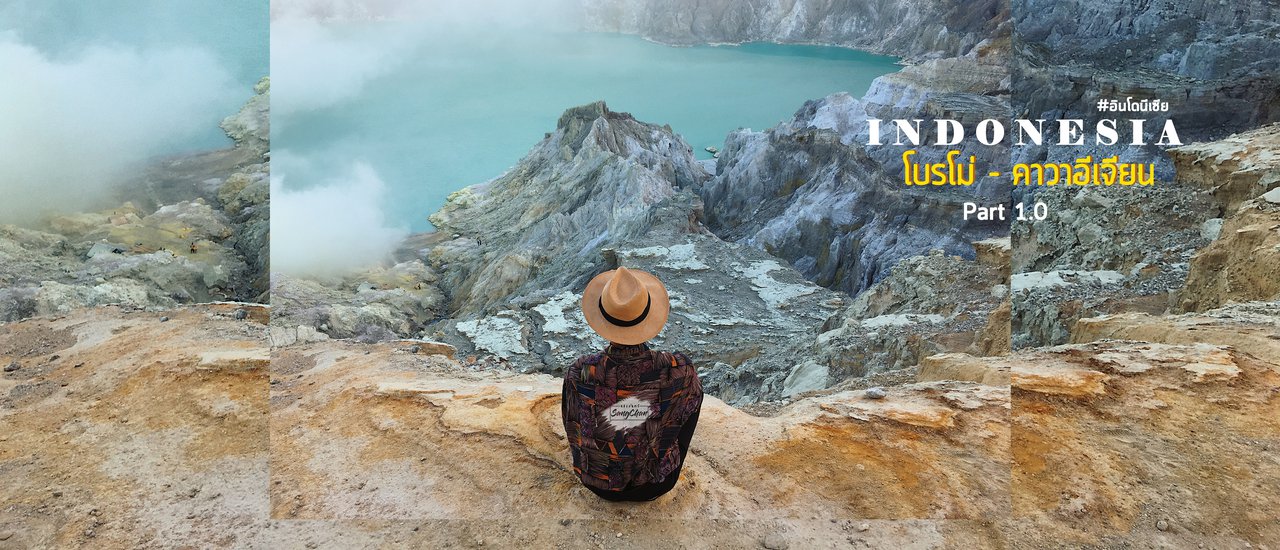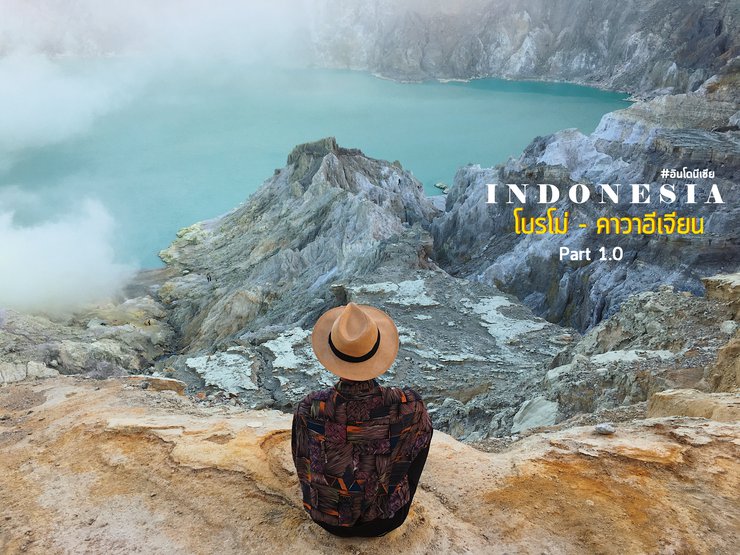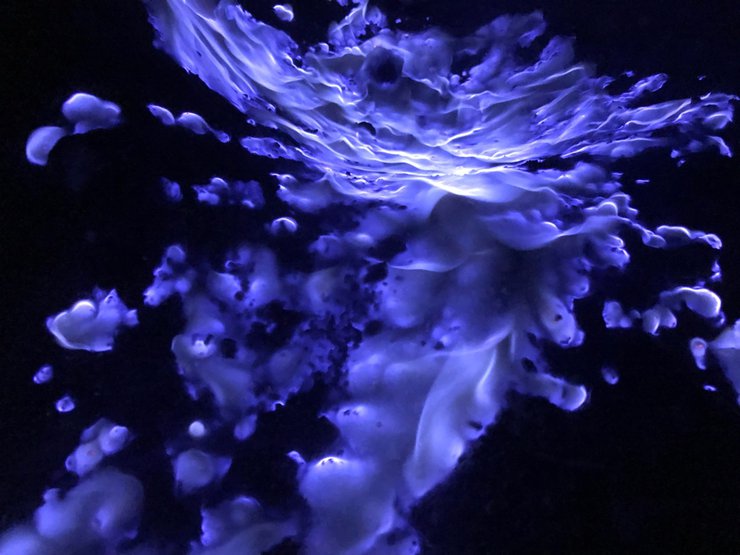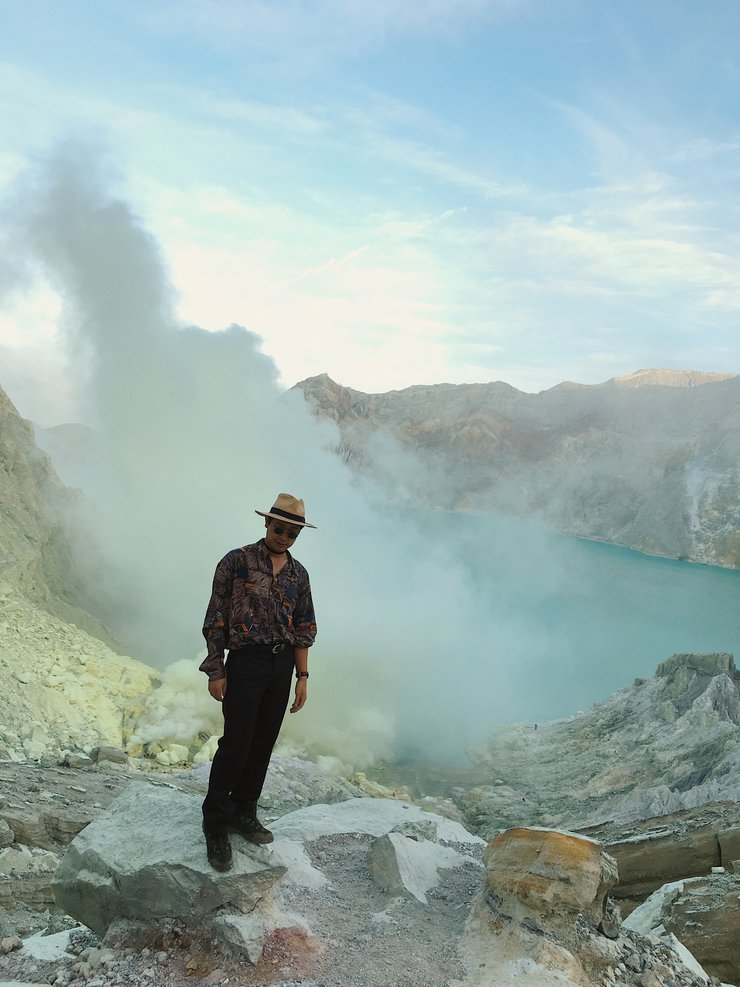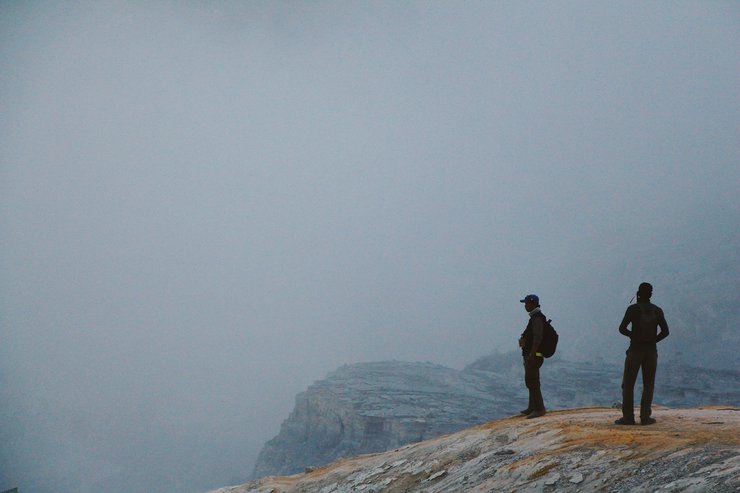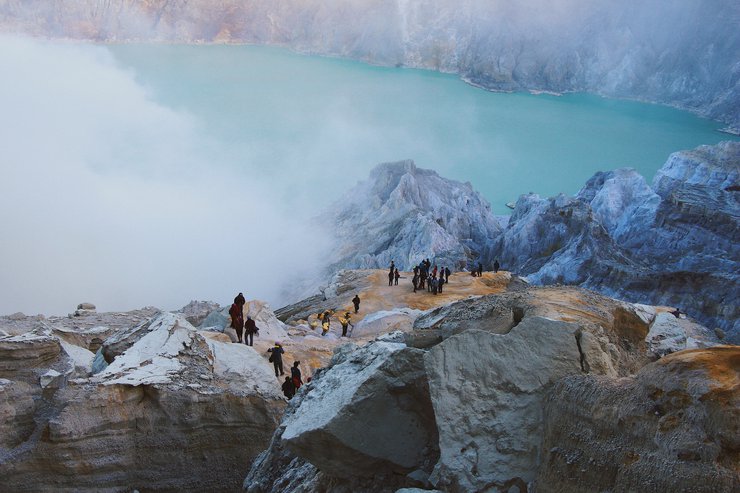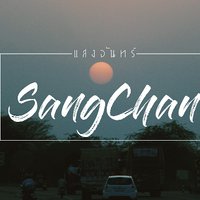
"Kawah Ijen" Volcano is one of the most famous volcanoes in Indonesia. It is located in East Java not far from Probolinggo city. The reason why the Kawah Ijen is so famous is the amazing blue flame, which is caused by sulfur gas rising up from the cracks of the earth's crust and burning in the atmosphere.The blue lake on the volcano's crater is also caused by sulfur.
Travel
Departure: Donmuang >> Changi Airport (Singapore)
Changi Airport (Singapore) >> Surabaya (Indonesia)
Return: Surabaya (Indonesia) >> Kuala Lumpur (Malesia)
Kuala Lumpur (Malesia) >> Donmuang
Travel Plan
Day1: Surabaya (Juada International Airport) - Homestay Arabica
Day2: Ijen Creater - Hotel Lumajang
Day3: Sewu Waterfall - Homestay Bromo
Day4: Brobo Creater, Whisper sand - Madakaripura Waterfall
Day5: Surabaya (Juanda International Airport) - BKK
After a 12 hour-long journey, we reached Juanda International Airport in Surabaya city. Our destination for today is the Homestay Arabica which is where we will stay before going up the Kawah Ijen as we will have to start walking at 2 AM to see the blue flames at the crater. This is because the blue flames can only be visible during the night.
01
Kawah Ijen Volcano - Danger hidden in beauty
Normally, 1 AM isn't the time when we get out of bed, especially in extremely cold weather such as now. However, tonight is different as seeing the Kawah Ijen's blue flames is our goal.
Other than the cold weather which made our walk difficult, the dust along the distance of almost 3 kilometers is another problem that caused us to walk slower. Also, the dark atmosphere at night and the steepness of the trail slowed us down. Finally, our determination led us to the crater. But this is not our destination because we wanted to go to the origin of the blue flames at the lake below. We have to walk around 700 kilometers there.
The closer we got to the destination, the smell of sulfur that came with the wind became stronger and stronger, to the point where we couldn't breathe properly without using our air purifier masks. We had to be very careful when walking down because the trail was very slippery and narrow. We also had to avoid people who are walking up. Many members of my group couldn't stand the smell of sulfur so most of them decided to stop walking and wait for the sun to rise. However, I continued my walk.
After separating with my group and walking down alone for a while, I started to feel like wanting to give up because the sulfur gas was so strong and there was smoke everywhere that sometimes, I had to close my eyes and stand still to wait for the smoke to dissolve as my eyes burned badly to the point where I couldn't even open my eyes. Luckily, I ran into the guide so he took me down to see the blue flames which we had to be very close to see it. I can't explain the feeling when I opened my eyes and saw the image in front of me. I only thought that it was totally worth it that I took the risk to come here. The blue flame flickering in front of me was so beautiful. How can nature create something so amazing?



After admiring the blue flames as intended, I returned back to my group. The sun started to shine to the area of the crater so we could see the atmosphere around. The turquoise lake below came into our view and it was a beautiful image.



The wind was still going strong so the sulfur gas spread throughout the crater. I had to keep my mask on all the time.






The smell of sulfur surrounding the area of the Kawah Ijen shows us that, other than the blue flame which the tourists come to visit, this place is like a sulfur mine which produces hundreds of kilograms of sulfur in each day. This is the origin of one of the riskiest and most health-hazardous jobs one can have - which is อาชีพ ลูกหาบ. No matter how dangerous the work is, they have to dig up the sulfur minerals and carry 80-90 kilos of them to sell at a price - which most of us might think is not worth the risk. If you think about it, if they had a better choice they might have not chosen to do this for a living. Since they don't have a choice, they do it despite the high risk and the locals come to view this job as 'normal' and a part of their life.
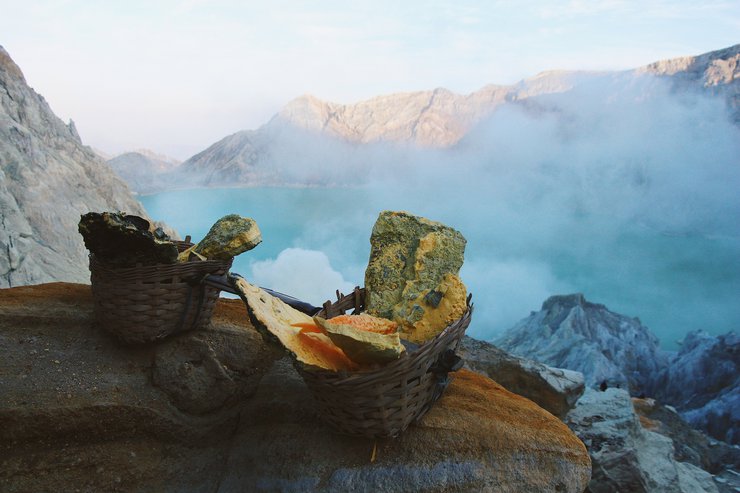
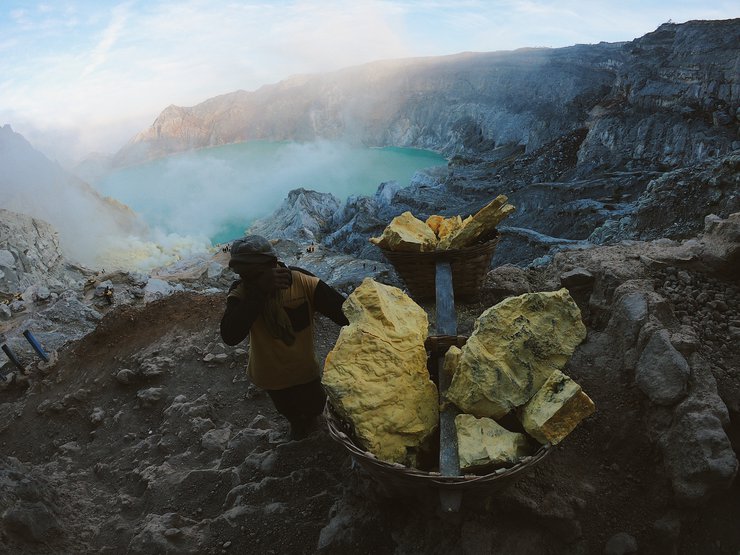


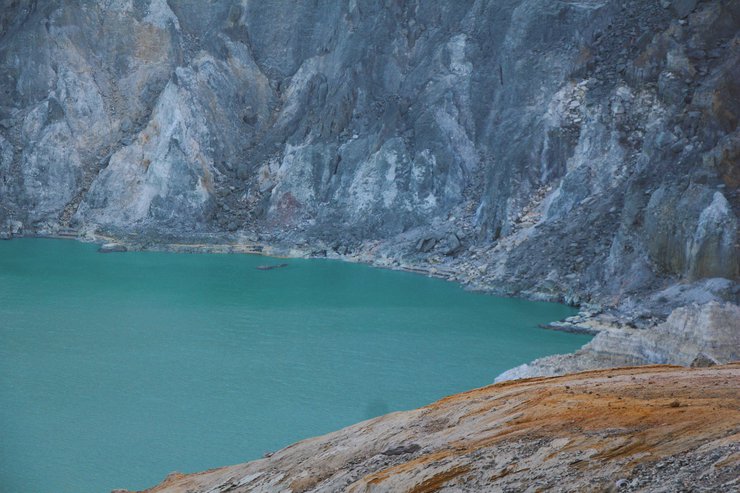





Tourists walk back up to the crater to reach the lower level. Others choose to walk around to admire the other sides of the crater.








A long fence is put up along the ridge of the volcano for tourists to admire the scenery and take memorable photos before returning home.


After walking up, you can see many other tourists going to the left, so we decided to follow them. Some members of our group chose to walk down first. Both sides of the trail are filled with small plants, leaving a long green trail along the way. Later on, you can see a forest damaged by a forest fire.






Another interesting viewpoint is the area where there are dead trees near the edge of the crater. Unfortunately, the sulfur gas was heavy today so we couldn't see the lake below us at all.




The heat became more and more terrible later on in the afternoon. Most tourists have left the site. Our remaining group with around ten people began to leave too. On the way down, we could still see tourists walking in the opposite direction from us.





We took around an hour and a half to walk down the mountain to reach our home stay, and prepare our journey to Lumajang city. To get there, it takes quite a lot of time. Our next destination is Sewu Waterfall - one of the biggest and most famous waterfall valleys on the Eastern Java Island



02
Sewu Waterfall or A Thousand Waterfall
Sewu Waterfall is located in Lumajang city. It takes around 7 hours to reach it from Kawah Ijen. Today we changed from staying at a home stay to a hotel in the city. The waterfall is half an hour away from the city by car. The waterfall itself is also called 'a thousand waterfall' because the waterfall's area is a valley caused by the collapsing of the earth's crust. The collapse created a large pool which is over 500 meters long and 120 meters below the high ground. Above the waterfall, there are spots where we can take photos at a good angle.
You can walk down to the base of the waterfall, however, the trail is very steep (almost 90 degrees steep at some points!) - you have to hang on tightly to the ropes and bamboo rails provided.









The water sprays at the base of the waterfall are quite strong so if you bring a camera to take photos, you have to be very careful, or bring an action camera instead. It would still be hard though, because the water will get in the way of the lens all the time so taking photos is very difficult.
After taking a considerable amount of time taking photos, it was time to leave as everyone started to get hungry. On the way back, we will go back the other way - walking below the waterfall then the guide will take us to where we can swim. We were all tired and covered in sweat and water so it was a good idea. The water here is so clear that we could see the ground!




Our next destination is... the land of God's Breath - Bromo volcano... Stay tuned!
Final thoughts..
"The Kawah Ijen made us understand more about humans. Many people might choose things that we think are not worth the risk, but actually, what they choose is all they have or may be the best choice they have. So, we can't decide anyone based on what we see only. And we can't use our emotions to judge other people."
#แสงจันทร์
แสงจันทร์
Tuesday, November 6, 2018 7:54 PM

